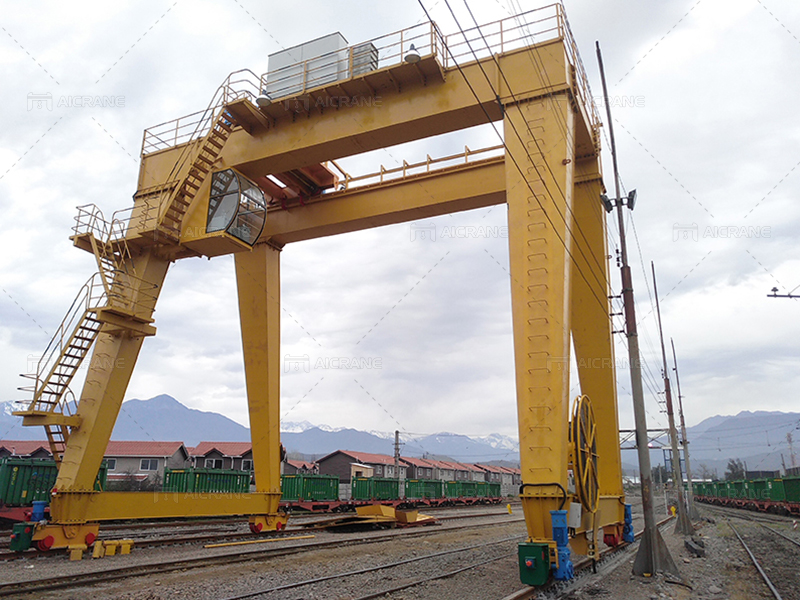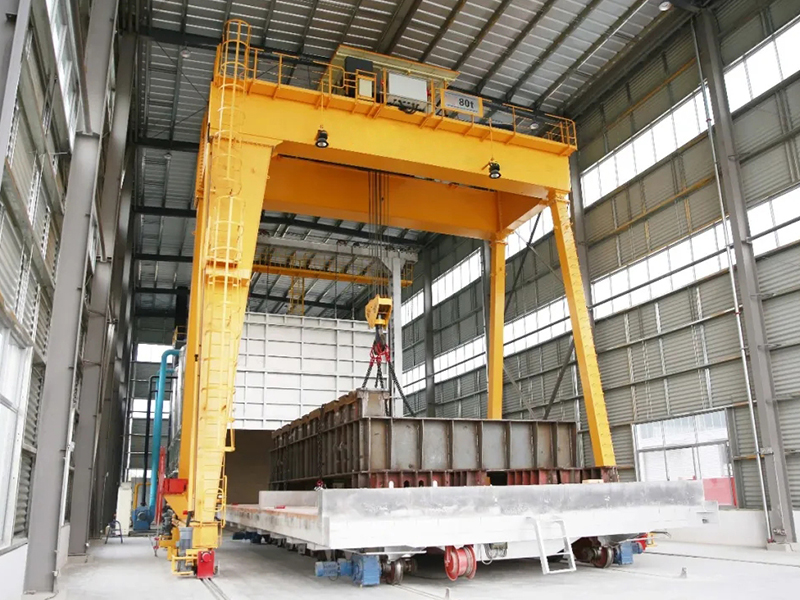Gantry cranes play a crucial role in material handling, offering a versatile and efficient solution for lifting and transporting heavy loads within industrial settings. Among the various types of gantry cranes, the double girder gantry crane stands out for its superior lifting capacity and stability. The efficiency of these cranes relies significantly on their control systems, which are meticulously configured to ensure precise and safe operations.

Configuration of Controls:
The controls of a double girder gantry crane are designed to provide operators with the ability to maneuver the crane with precision, ensuring the safe and efficient handling of heavy loads. These double girder gantry cranes typically feature a combination of manual, semi-automatic, and fully automatic control systems.
Manual Controls:
Manual controls serve as the foundation of the double girder gantry crane’s operation. These controls are often mounted on a control panel or a handheld pendant, allowing operators to manage various functions manually. Key components of manual controls include:
Joysticks: Double girder gantry cranes are equipped with joysticks that enable operators to control the crane’s movement along the rails. Pushing the joystick in different directions controls the crane’s travel, including forward, backward, left, and right movements.
Buttons and Switches: These are used for specific functions such as lifting, lowering, and trolley movement. Operators can press buttons to control the lifting and lowering of the load, and switches to move the trolley along the bridge.
Emergency Stop: An essential feature in any crane control system, the emergency stop button allows immediate halting of all crane movements in case of an emergency.
Semi-Automatic Controls:
Semi-automatic controls enhance the precision of the double girder gantry crane’s movements, allowing for smoother and more controlled operations. These controls often include features such as:
Variable Frequency Drives (VFDs): VFDs enable operators to adjust the speed of the crane’s movements, providing flexibility in handling different loads and navigating through varying work environments.
Positioning Systems: Advanced gantry cranes may include positioning systems that allow for accurate placement of loads. This is particularly useful in applications where precise positioning is critical.
Load Monitoring Systems: Semi-automatic controls may incorporate load monitoring systems that provide real-time information about the load’s weight and distribution. This helps prevent overloading and ensures safe lifting operations.

Fully Automatic Controls:
In certain industrial applications, fully automatic controls are employed to streamline material handling processes and improve overall efficiency. These controls often integrate sophisticated technologies such as:
Programmable Logic Controllers (PLCs): PLCs are at the heart of fully automatic control systems, enabling the automation of various gantry crane functions. They can be programmed to execute predefined tasks, reducing the need for constant operator intervention.
Sensors and Cameras: Fully automatic controls may utilize sensors and cameras to detect obstacles, monitor load conditions, and provide feedback for autonomous decision-making. This enhances the crane’s ability to adapt to dynamic work environments.
Remote Control Systems: Remote control technology allows operators to control the double girder gantry crane from a distance, providing a safer and more ergonomic working environment. This is particularly beneficial in applications where direct operator proximity to the crane is challenging.
Benefits of Advanced Control Configurations:
The configuration of controls in a double girder gantry crane is not merely a technological feature; it directly influences the crane’s efficiency, safety, and overall performance. Advanced control configurations offer several benefits:
Enhanced Precision: Semi-automatic and fully automatic controls enable operators to achieve precise movements and positioning, reducing the risk of accidents and improving overall productivity.
Increased Safety: Emergency stop features, load monitoring systems, and obstacle detection technologies contribute to a safer working environment, minimizing the likelihood of accidents and injuries.
Improved Efficiency: Automatic controls streamline material handling processes, reducing the time required for each operation and optimizing workflow. This leads to increased efficiency and productivity in industrial settings.
Adaptability: Advanced control configurations make double girder gantry cranes more adaptable to diverse work environments, allowing them to handle a wide range of loads and navigate through challenging spaces.
Conclusion:
The controls of a double girder gantry crane are meticulously configured to provide operators with the tools they need to handle heavy loads safely and efficiently. From manual controls for basic operations to semi-automatic and fully automatic systems that offer enhanced precision and adaptability, the configuration of controls plays a crucial role in the overall performance of these industrial workhorses. As technology continues to advance, we can expect further innovations in crane control systems, ushering in an era of even greater efficiency, safety, and automation in material handling processes. To learn more about cranes, visit https://steelmillcranes.com/